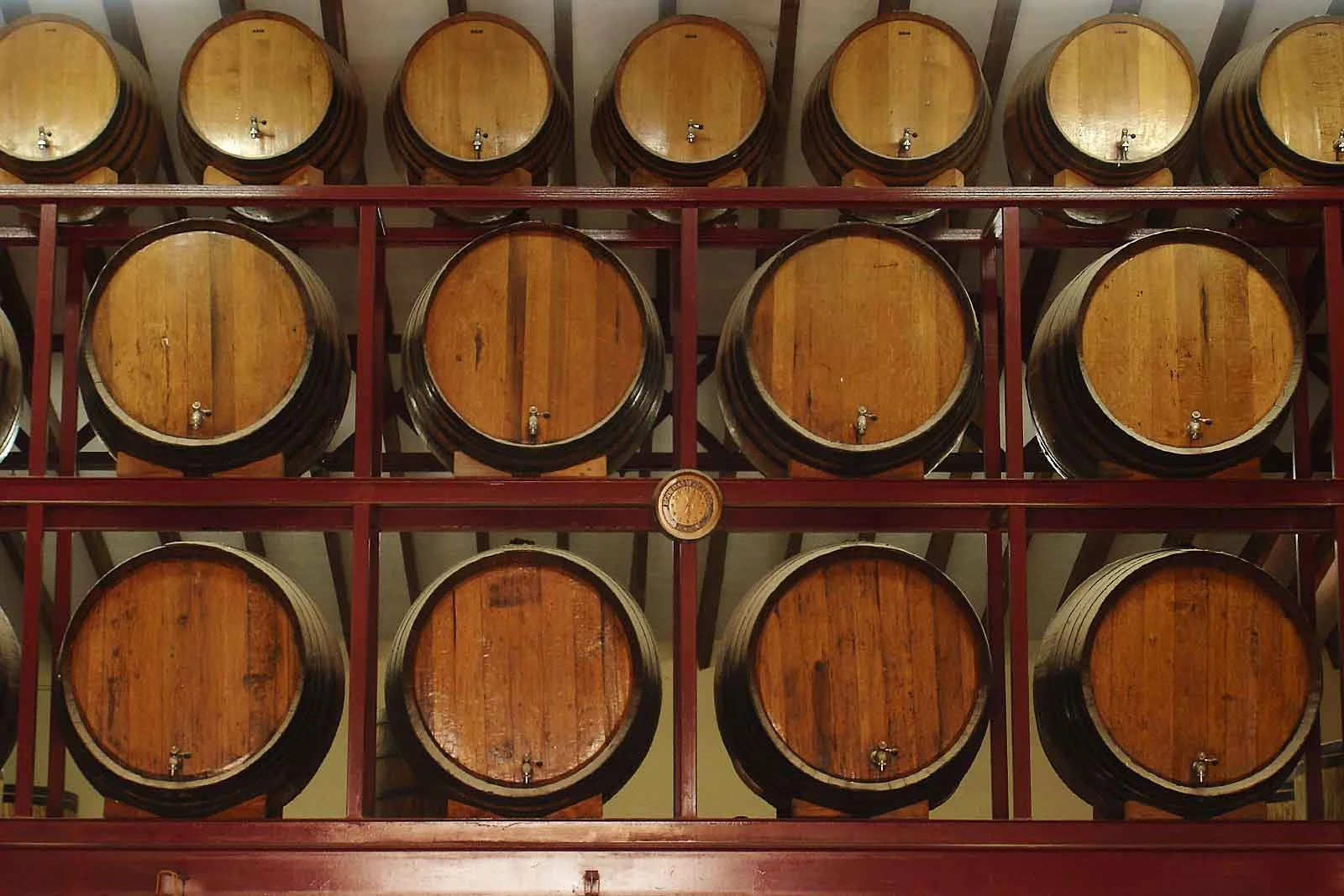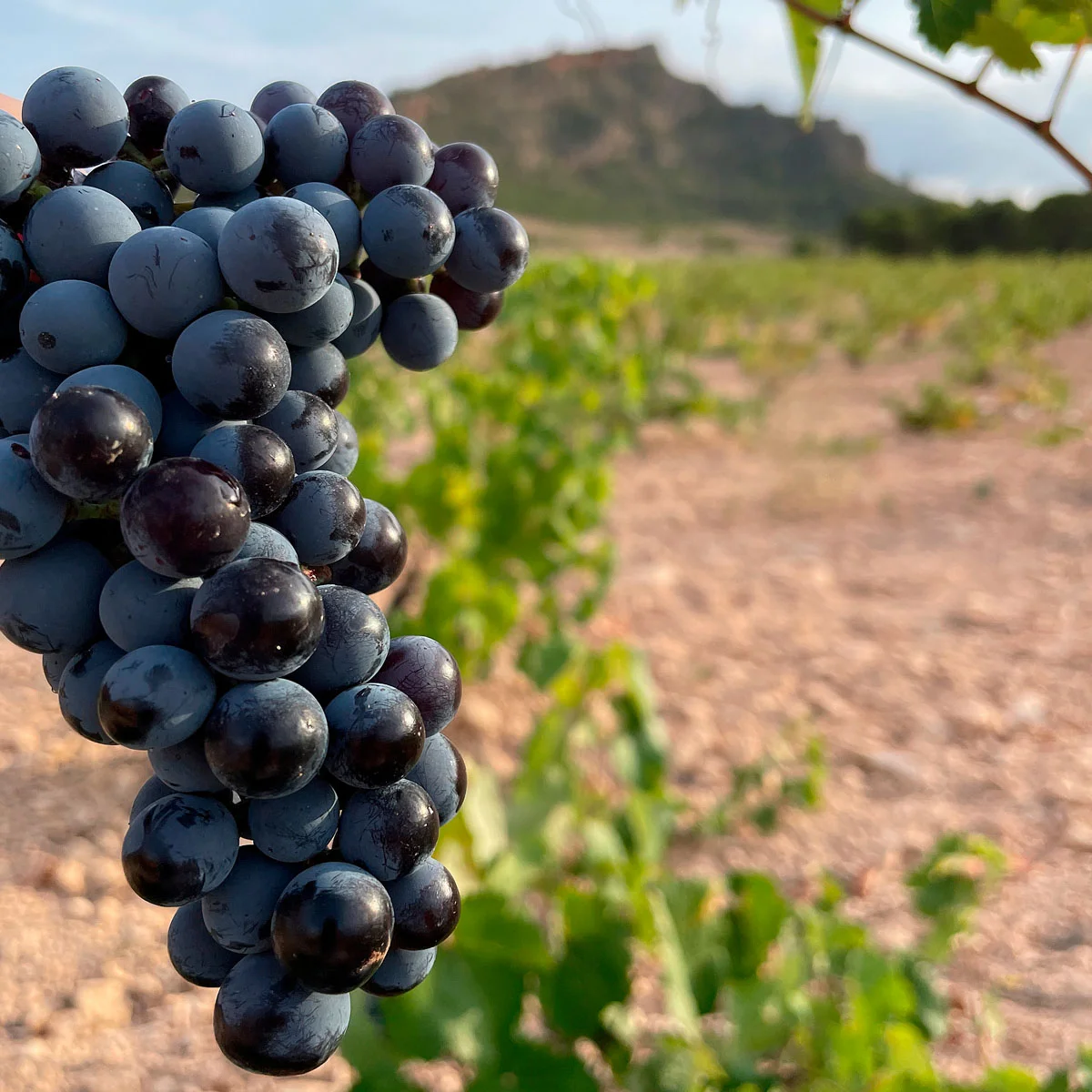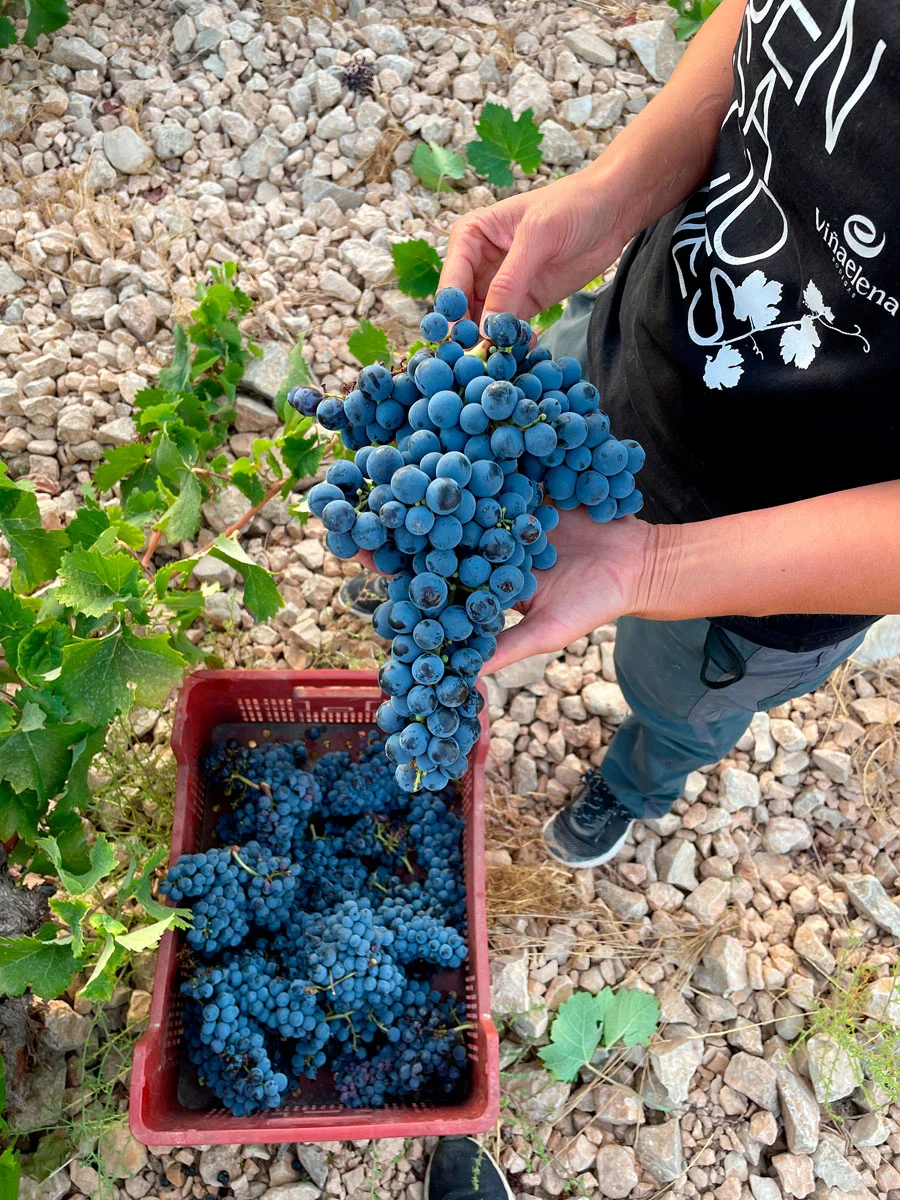The area’s unique geographical setting contributes significantly to the distinct flavors found in its winery productions.
Vineyards spread across high plateaus and dramatic valleys, where the climate is continental but moderated by the proximity to the Mediterranean Sea.
This introduces an intriguing complexity to the grapes that thrive in these soils dominated by limestone.
Origin of the word Jumilla
Over time, the name evolved into “Xumilla” and eventually “Jumilla” as it is known today.
The Monastrell Grape: Jumilla’s Signature Variety
Monastrell is the signature grape variety of the Jumilla wine region, and it is responsible for producing commonly full-bodied red wines that the region is known for.
Monastrell, however, has experienced a significant transformation in recent years, especially in the wine region of Jumilla.
Today’s winemakers are now producing Monastrell wines that are more refined, elegant, and fresh than ever before.
This thick-skinned grape thrives in the hot, dry climate of Jumilla, and it produces wines with deep color, rich tannins, and complex flavors of dark fruit, spice, and earth.
While Monastrell is also grown in other regions of Spain and in France, the unique terroir of Jumilla gives these wines a distinct character that is prized by wine enthusiasts.
Other Grape Varieties Thriving in Jumilla
- Garnacha Tinta,
- Tempranillo, Syrah,
- Cabernet Sauvignon and Merlot.
Each variety contributes distinct characteristics to both blended and single-variety bottles.
Jumilla also produces impressive white wines primarily from Airén and Macabeo, offering fresher, floral profiles ideal for lighter pairings.
The Climate and Terroir of the Jumilla Wine Region
The region’s vineyards are planted at high altitudes, ranging from 2,000 to 3,000 feet above sea level, which helps to moderate the temperature and provide ideal growing conditions for the Monastrell grape.
The soil in Jumilla is primarily composed of limestone and chalk, which provides excellent drainage and helps to impart a unique mineral character to the wines.

The Winemaking Process in Jumilla: From Vine to Bottle
The grapes are harvested by hand and sorted to ensure that only the highest quality fruit is used.
The grapes are then crushed and fermented in stainless steel tanks or oak barrels, depending on the style of wine being produced.
After fermentation, the wine is aged in oak barrels or bottles for a period of time, ranging from several months to several years, to develop its full flavor and complexity.

The Flavor Profile of Jumilla Wines: What to Expect
Modern winemakers are now producing Monastrell wines that are more refined and elegant, moving away from the heavily extracted, high-alcohol wines of the past that were often too tannic to enjoy in their youth.
Today’s Monastrell wines from Jumilla are characterized by their bright fruit flavors, balanced acidity, and subtle use of oak, resulting in wines that exhibit a beautiful purity of fruit with aromas of ripe blackberries, cherries, and plums, along with hints of spice and herbs.
The tannins in these wines are smoother and more integrated, allowing them to be enjoyed now or aged for a few years.
These modern Monastrell wines are a testament to the skill and innovation of Jumilla’s winemakers, who are committed to showcasing the true potential of this historic grape variety.
- A robust version of these wines, with bold flavors and rich tannins make them a great match for hearty dishes such as grilled meats, spicy stews or flavorful cheeses like an aged Manchego.
- On the other hand, the lighter reds complement dishes with more delicate flavors, such as grilled fish or roasted vegetables. They can also be served slightly chilled, making them a refreshing option for warmer weather.
- Also the lighter whites complement seafood and salad dishes, highlighting their crisp, aromatic profile.

Vina Elena Winery: A Reflection of Jumilla Tradition
With a focus on sustainable practices and meticulous craftsmanship, Vina Elena illustrates the harmonious balance between modern innovations and age-old winemaking traditions.
Their portfolio showcases a range of exquisite wines that encapsulate the essence of Jumilla’s terroir.
Innovative Techniques Strengthening Tradition
At Vina Elena, innovative viticultural techniques go hand in hand with traditional methods.
The use of controlled yeast strains or temperature-controlled fermentations exemplifies how the winery embraces technology without detracting from the inherent qualities of Jumilla’s grapes.
Such strategies ensure consistency and quality across vintages, securing the winery’s reputation at the forefront of the Jumilla wine scene.
The Global Appeal of Jumilla Wines
In recent years, Jumilla wines have gained significant traction on the international stage.
Their unique nature and complex profiles have found favor among connoisseurs and casual drinkers alike, reflecting a growing appreciation for what was once considered a ‘hidden gem’ within the wine world.
Trends in Consumer Preferences
The global shift towards more elegant, fresher wines places Jumilla in an ideal position to cater to contemporary tastes.
Wine enthusiasts increasingly seek out varietals that offer a compelling story, and Jumilla’s ancient vineyards and survivalist grapes tell a captivating tale of resilience and adaptability.
As such, distributors and retailers are ramping up their listings of Jumilla wines, aligning supply with the uptick in consumer demand.
- Elegant flavor profiles
- Rich history
- Modern adaptations
Jumilla’s ascent in the global wine community speaks volumes about its quality and versatility, making it an indispensable addition to any enthusiast’s wine collection !

